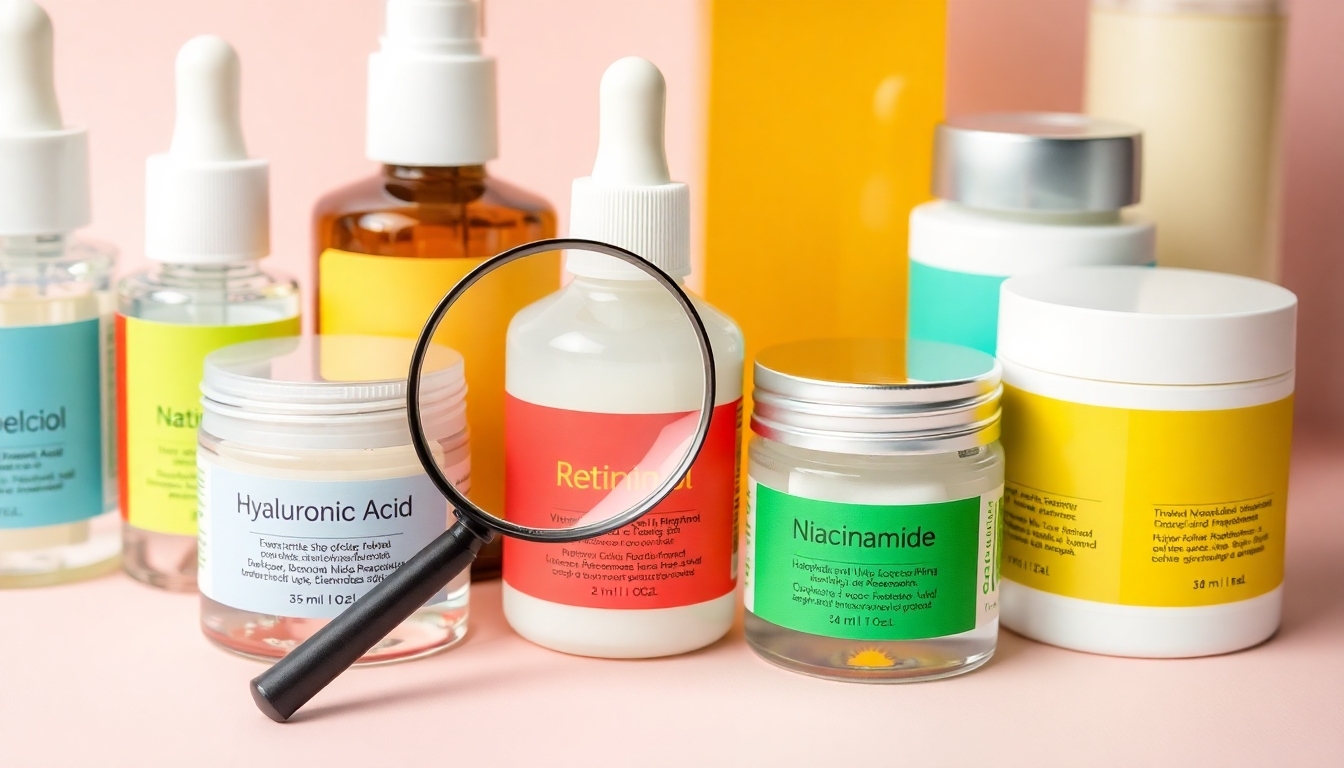Table of Contents
Ever wondered what’s really in your skincare products? Understanding skincare labels can be your key to healthier skin. By decoding the ingredients list, you’ll make informed choices that suit your skin’s needs.
Skincare labels often hide behind complex names and terms. Don’t let that discourage you! With a bit of knowledge, you’ll easily spot beneficial ingredients and steer clear of potential irritants.
Ready to become a skincare label pro? Let’s jump into the intimidating and confusing world of ingredients and empower you to choose the best products for your skin.
The Importance of Reading Skincare Labels
Understanding skincare labels is crucial for selecting products that meet your skin’s specific needs. By reading labels, you identify ingredients that benefit your skin and avoid those that might cause irritation or adverse reactions. Knowledge of skincare labels empowers you to make informed decisions, enhancing your skin’s health and appearance.
Key Ingredients to Look For
That being said, which are the ingredients you should actually pay attention to? Nobody has time to remember thousands of individual compounds right?
Moisturizing Agents
Look for hyaluronic acid, which retains moisture effectively. Glycerin and ceramides also enhance skin hydration and barrier function.
Anti-Aging Components
Retinol stimulates collagen production, reducing wrinkles. Vitamin C brightens skin and fights free radicals. Peptides support skin elasticity.
Sun Protection Factors
If you’re getting something with sun protection, look for zinc oxide or titanium dioxide for broad-spectrum UV protection. Ensure the SPF value is at least 30 for adequate defense against sun damage. Anything under that is nice, but won’t protect your skin enough.
Ingredients to Avoid
As for bad ingredients to avoid, here’s a common list of irritants that matter the most. There’s obviously more, but you can’t spend all your time avoiding toxins seeing as they’re everywhere.
- Alcohols like ethanol and isopropyl alcohol can dry out your skin.
- Fragrances often cause irritation and sensitivity.
- Sulfates such as sodium lauryl sulfate strip natural oils from your skin.
- Parabens, including methylparaben and propylparaben, may trigger allergic reactions.
- Formaldehyde releasers like DMDM hydantoin and imidazolidinyl urea can cause skin irritation.
- Lanolin, derived from wool, is a known allergen for some individuals.
How to Decipher Ingredient Lists
Understand the Order of Ingredients
Ingredients appear in descending order of concentration. The first few ingredients make up the bulk of the product. For example, if water is listed first, it’s the primary ingredient. If it’s listed last, there’s the least of it in there.
Identify Active Ingredients
Active ingredients are those that provide the product’s intended effect. Look for them near the beginning of the list. Examples include retinol, vitamin C, and hyaluronic acid. For all the advertising and marketing out there, a product without some combination of those 3 isn’t a serious over-the-counter solution.
Watch for Potentially Harmful Substances
Scan the list for irritants or allergens. Common ones include alcohols, fragrances, sulfates, parabens, formaldehyde releasers, and lanolin. These can cause skin reactions.
Be aware that “fragrances” is an umbrella term for all sorts of scents that could have been used so it’s never clear if the specific “fragrances” in a product will trigger your particular sensitivity. For most people, it’s a toss-up, for those sensitive, it’s better to avoid altogether than try potentially dozens of products that won’t work for you.
Recognize Scientific Names
Many ingredients are listed by their scientific names. Familiarize yourself with these to better understand what’s in your products. For instance, “tocopheryl acetate” is a form of vitamin E.
Check for Concentration Levels
Some products list the concentration of active ingredients. This information helps you gauge the product’s effectiveness. A higher percentage of an active ingredient often means stronger results.
One specific ingredient to be careful of is retinol (vitamin A). It’s great for rejuvenating your skin but can dry out and irritate your skin in high concentrations. It’s generally not sold in high concentrations over-the-counter for this exact reason.
Tips for Making Informed Choices
Research Ingredients Thoroughly
Before purchasing skincare products, take a moment to look up the product on EWG’s Skin Deep database and make sure there’s nothing concerning for your sensitivities. They have a massive database with almost all the products you’d find at a pharmacy or standard beauty shop.
Consider Your Skin Type
You’ll identify your skin type and whether it’s oily, dry, sensitive, or combination. Choose products with ingredients that cater to your skin’s specific needs. For example, you’ll wanna get something with hyaluronic acid for hydration if you have dry skin.
Check for Allergens
Scan the ingredient list for common allergens like fragrances or lanolin. If you have known allergies, you’ll avoid products containing these substances to prevent adverse reactions. If a product unexpectedly gives you a bad reaction, take note of the ingredients list and make sure you don’t waste money on trying something similar next time.
Understand Ingredient Concentrations
Look for the concentration of key ingredients if it’s on the package or online as higher percentages can indicate more potent effects. For instance, a serum with a higher concentration of vitamin C might offer better brightening results. You’ll notice the more expensive products aren’t always better past a certain price point.
Conclusion
You’re now equipped to navigate the intimidating world of skincare labels with confidence. By understanding the ingredients, you’ll choose products that truly benefit your skin and avoid harmful substances. You might even end up saving a bit of money as some of your favorite products weren’t as high in active ingredients as you imagined.
Frequently Asked Questions
Why is it important to understand skincare labels?
Understanding skincare labels helps you make informed choices about products that suit your skin’s needs. It allows you to identify beneficial ingredients and avoid irritants, ultimately enhancing your skin’s health and appearance.
What are some key moisturizing ingredients to look for in skincare products?
Key moisturizing ingredients include hyaluronic acid, glycerin, and ceramides. These help retain moisture and improve the skin’s barrier function.
Which ingredients should I look for to combat aging?
To combat aging, look for retinol, which stimulates collagen production, and vitamin C, which brightens the skin and fights free radicals.
What sun protection factors should I seek in skincare products?
Seek sun protection factors like zinc oxide or titanium dioxide. An SPF of at least 30 is recommended for effective defense against sun damage.
What common irritants should I avoid in skincare products?
Avoid common irritants such as alcohols, fragrances, sulfates, parabens, formaldehyde releasers, and lanolin, which can cause irritation or allergic reactions.
How are ingredients listed on skincare products?
Ingredients are listed in descending order of concentration, with the first few making up the bulk of the product. This helps identify the main components so use it to pick products with more active ingredients.
What are active ingredients, and why are they important?
Active ingredients are responsible for the product’s intended effects. Knowing them helps ensure you’re getting the benefits the product promises.
What should I consider when selecting skincare products?
Consider your skin type, check for allergens, and align product claims with the ingredient list. Researching ingredients and reading reviews can also guide your choices.
How can I stay updated on skincare trends and research?
Stay updated by following reputable skincare blogs (like this one), dermatologist recommendations, and the latest research publications to keep informed about new trends and ingredients.



